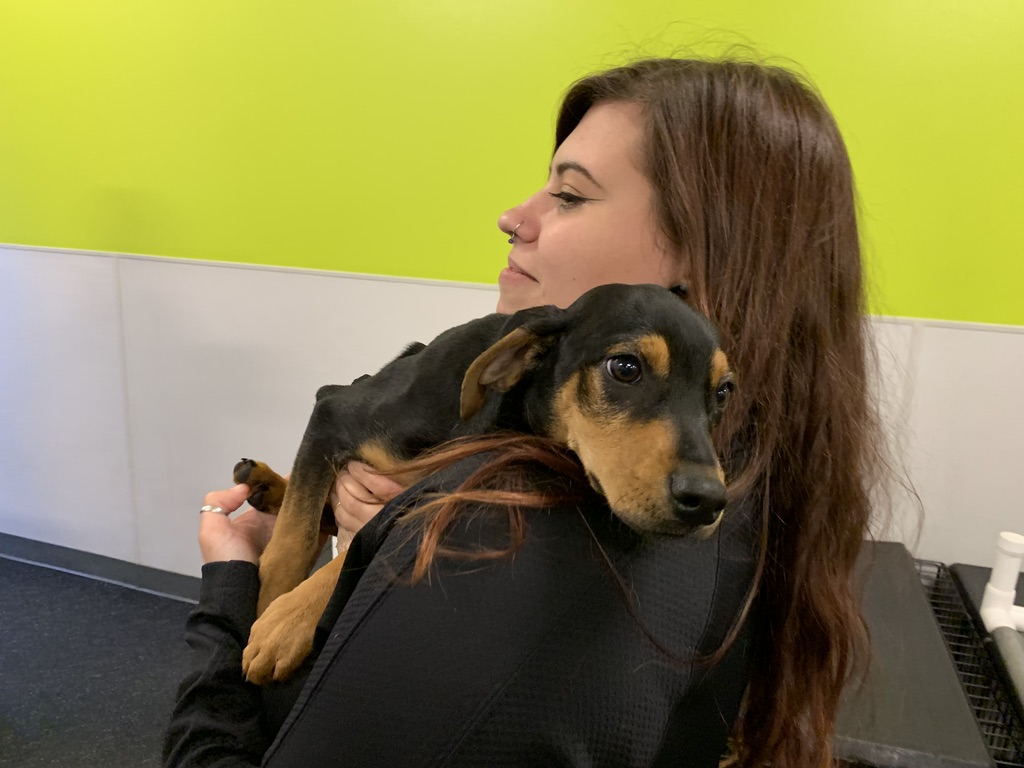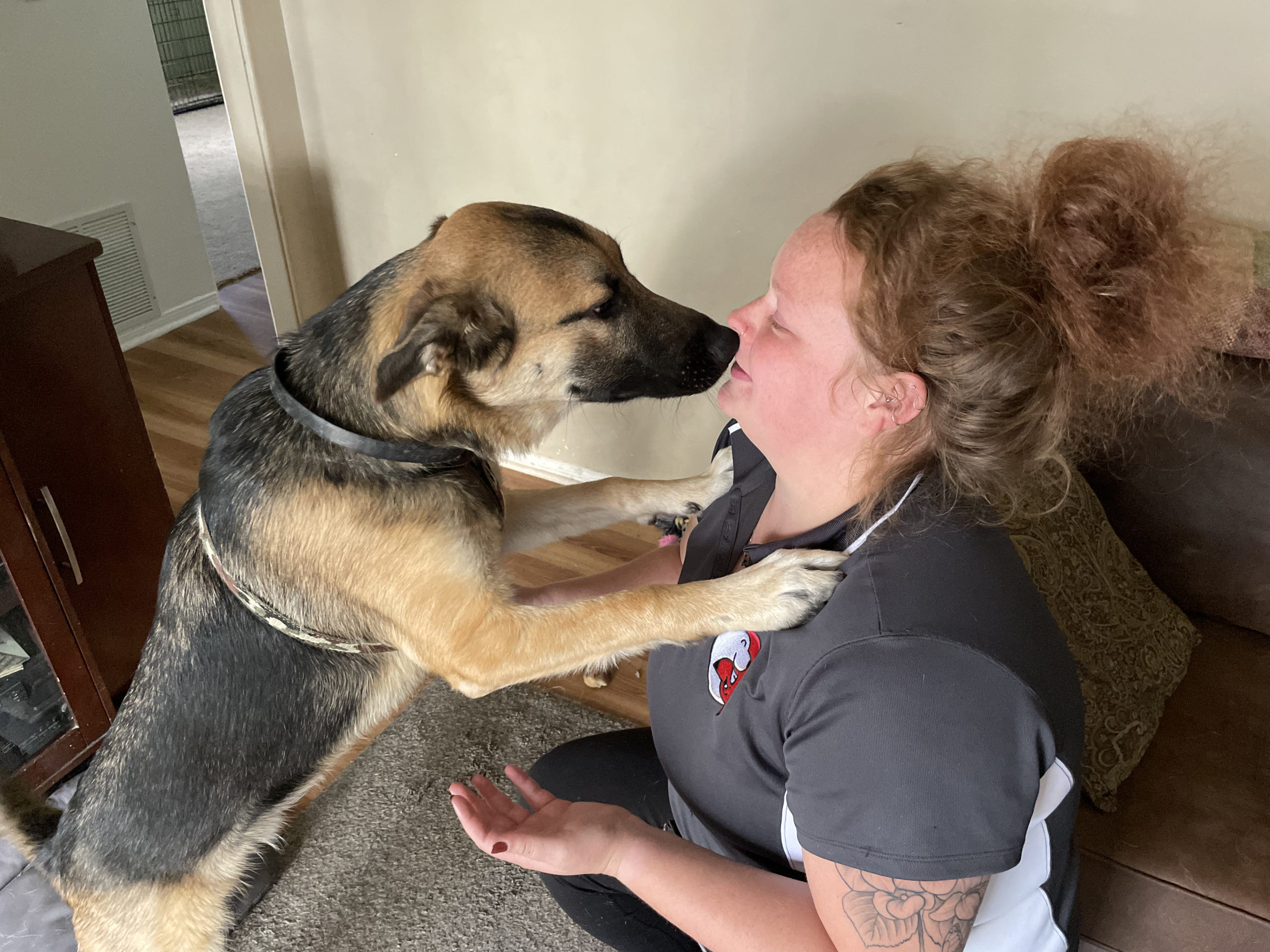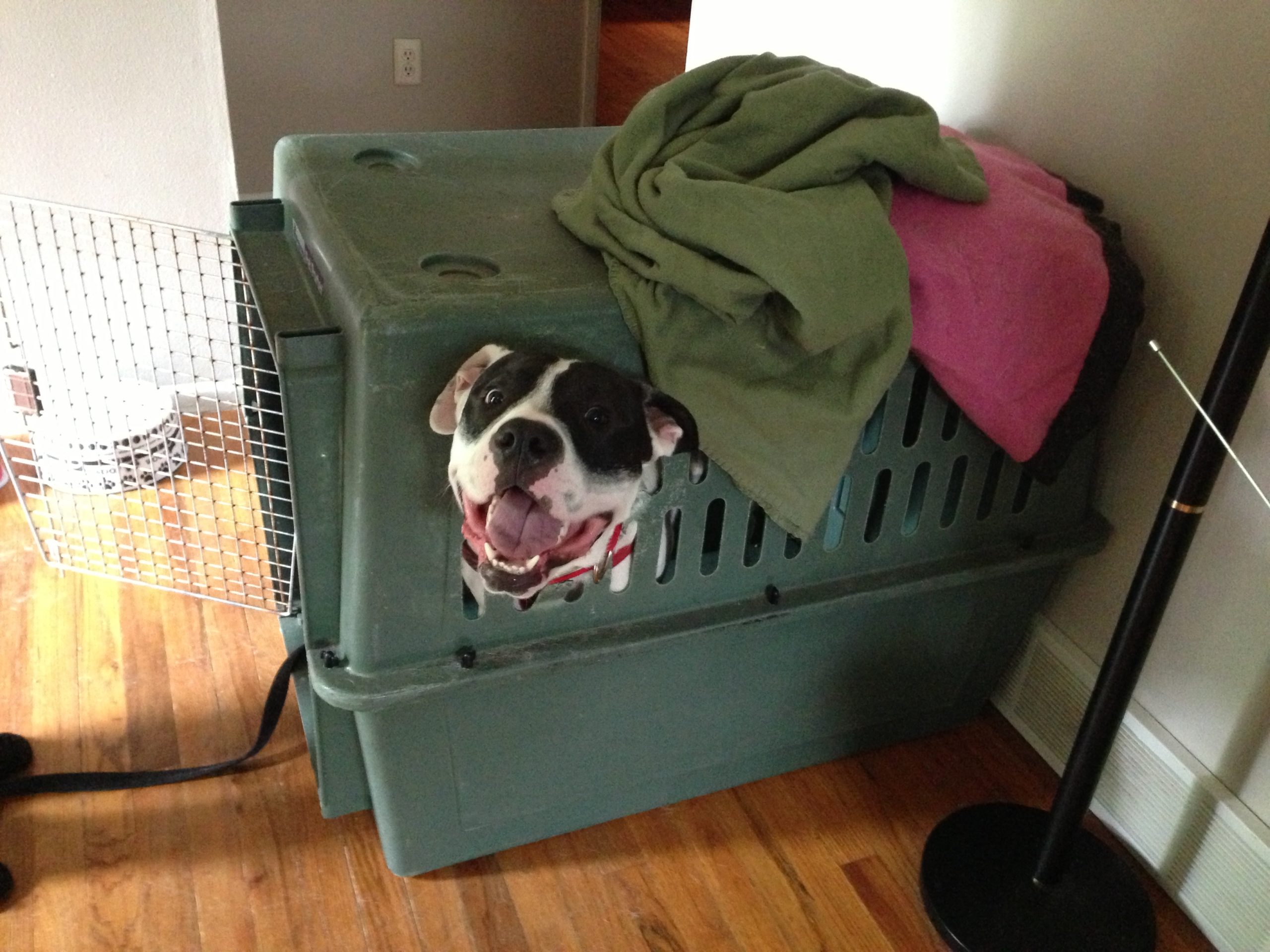We are currently revamping our Separation Anxiety program.
Until our program update is complete, we are not accepting new Separation Anxiety clients. We apologize for the inconvenience.
If your dog has Separation Anxiety when you leave them alone, we would love ot help you. We have developed a Separation Anxiety treatment program to help dogs who cant be left home alone.
Prior to CoronaVirus, it was estimated up to 50% of all dogs suffer from this problem. That number is much higher now after so many dogs were with their humans 24/7. Now that we are going out again, our poor dogs dont know what to do and often suffer in anxiety and stress. This problem has become so common that Dog Separation Anxiety Help has become one of our most common in home dog training requests.
Stopping Separation Anxiety in Dogs
.
Separation Anxiety is esstentially a panic attack a dog has when being left alone. This condition can impact dogs of every age, sex and breed. This is most often a result of the dog not practicing being alone when they are a young puppy. This is why we stress the importance of setting up a Long Term Confinement Area or safe sanctuary in our puppy training classes.
People often take it personally when they come home to find their dog has destroyed furniture, chewed through the front door or a wall, had accidents or barks non stop until someone comes home. But your dog is not acting this way on purpose.
Accidents, chewing and other destructive behaviors are common symptoms of Separation Anxiety in dogs
Some people think their dog is chewing, soiling or barking intentionally, but that couldn’t be farther from the truth. Dogs with separation anxiety often bark non-stop or loose control of thier bowels due to the stress. Some chew things up to try to soothe themselves and others will chew at doors or walls to escape. People often mistakenly think the dog chewed or soiled their things on purprose “to get back at them for leaving the dog alone.”
Dog Gone Problems’s staffers will come to your home to help and often gets kisses from a gratetful clients!
In reality, dogs act out in these ways as a coping mechanism trying to deal with or aleviate the stress; so any punishment will only make matters worse. We know its frustrating, but trust us on this one; pointing to the item and saying “bad dog” will not help. In fact, it will most likely make it worse.
Other people think a kennel can solve their dog’s separation anxety problem, but that just causes the dog to become more frustrated as its not addressing the root cause to the problem; an insecurity of being left home alone. Or try to escape, or chew their way out of the kennel!
Your dog may not chew things up or soil the house when its in a kennel, but the anxiety is often multiplied, resulting in evern worse behaviors (territorality, barking, aggression, sound sensitivity, fearful behaviors, etc).
Due to such high demand, we have developed a treatment plan to help people’s dogs get over their Separation Anxiety problem for good. However, our program does have some requirements:
Requirements for our Treatment Program
.
• Sanctuary Room – A room we can use as a safe sanctuary for the dog to practice being alone in. This is where you will practice the exercises and leave your dog when you leave after you have completed the program. A spare bedroom, finished basement, den or room away from the entry / exit door is what is needed.
• Security Camera – Being able to monitor your dog when it cant see you is a crucial component of this program. You will need to have a camera in place so you can watch your dog as it practices being alone.
• Alternative Leave Options – While we work on your dog’s Separation Anxiety, its important you do not leave your dog home alone for a 1-2 month period of time (Doing so is essentially arranging for your dog to practice panicking when left alone which will set back your progress). This means using daycare or having someone stay with your dog when you leave it alone so it doesnt practice panicking when left alone.
• No Fear or Aggression – If your dog is overly fearful or aggressive to humans, those issues will need to be addressed before you can work on your dog’s Separtion Anxiety. You can get information about our behavior help options by clicking this link.
If you can commit to the 3 above requirements and your dog does NOT have fear of aggression problems, and want more information, or to schedule an in home dog behavior session to stop your dog’s Separation Anxiety, fill out the form below.






